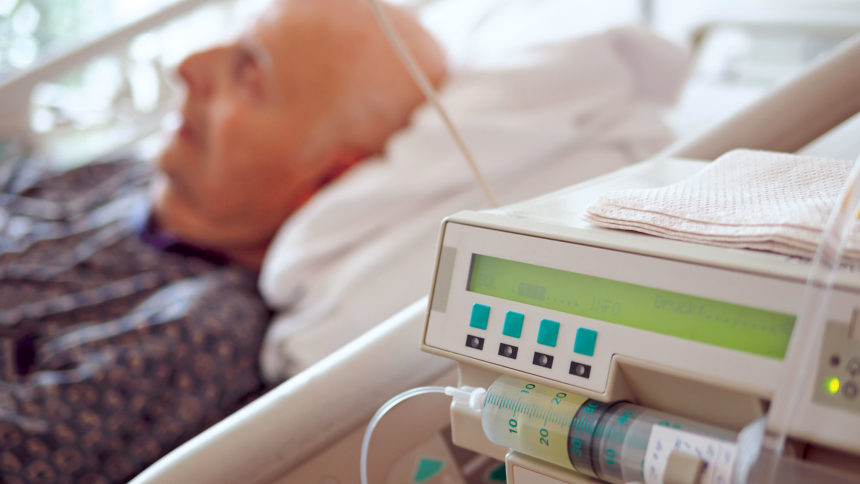
A lack of end-of-life training may leave certified nurse assistants unprepared to work with patients receiving palliative or hospice care, but nursing homes must do more to cross-train and build their confidence.
That was the message this week from Karl Steinberg, MD, CEO of Stone Mountain Medical Associates, and certified nurse aide Telisa Green, who addressed barriers to quality, end-of-life care during a webinar hosted by the National Association of Health Care Assistants.
The speakers recognized that education in this care area can be hard to come by for CNAs, who are broadly trained in vitals and other care-taking tasks.
“Almost all of the palliative care skills that CNAs learn are on-the-job training,” Steinberg acknowledged. “I absolutely will advocate for increasing the availability of palliative care training for nursing assistants.”
He said palliative and end-of-life care might be distinct facets of long-term care, but certified nursing assistants can apply their principles generally to their work in nursing homes.
“A lot of the care that’s given in nursing homes, whether we call it that or not, is palliative care,” Steinberg said, “because its team-based care, it’s care that relates to not just the physical person but the quality of life. We’re all about symptom control, symptom management, and making each day the best day it can be. And I hope we do that for just about all of our nursing home residents.”
During the COVID-19 pandemic, many nursing homes that usually relied on consultations with outside palliative care experts were forced to adapt their own regular care methods, despite a lack of further training and resources.
Nursing home workers face other obstacles to providing palliative care, including staffing and workload issues. Even care workers trained in palliative care may struggle to meet the complex psychosocial needs of patients nearing the end of their life.
“Staffing is a big issue,” Steinberg told McKnight’s Long-Term Care News. “Part of palliative care is listening, and part of it is ‘slow medicine’ where just holding space and being present with a patient can have immense value. A busy CNA on a busy unit is going to have a hard time being able to really incorporate all that at the level that would be ideal.”
Takeaways for CNAs
Steinberg emphasized that if there was one thing any nursing home CNA — whether regularly engaged in palliative or hospice care or not — needs to be able to do, it’s to develop comfort around the topic of death.
“A lot of times if you’re dealing with family members — or even a resident that knows what’s going on — in my experience, they really appreciate when somebody is willing to be honest with them and talk openly with them,” Steinberg said.
“I believe in being honest and I also try to make a good one-on-one relationship with the patient and the family,” Green elaborated, “assuring them I’m gonna be there until the end.”
Both presenters emphasized the importance of prioritizing a patient and their family’s comfort over too much devotion to a formalized care plan, as well as being an advocate for the patient’s well-being — especially in end-of-life and hospice settings.
“If the patient is comfortable — if the family knows the patient is comfortable and in no distress — I would advocate for letting them be in as little pain as possible,” Green said.
Steinberg advised CNAs to approach nurses with suggestions for adjusting care plans when necessary to avoid unnecessary pain. In end-of-life care, for example, it’s possible that routinely repositioning a patient might result in more pain than benefit to the patient’s wellbeing.
He reminded CNAs that doctors and nurses rely on them because they have so much more time spent with individual residents and can observe key changes in demeanor and condition.
The speakers also touched on meeting patients’ psychological and spiritual needs with an attitude of openness and care, even if their beliefs and practices are different.
“I never push my view on them, but if they’re open and want to have prayer, I will do that and I let them lead in whatever way that they want,” said Green. “I’m always open and willing to close my eyes or hold their hand —anything to help them feel comforted.”
“One thing I didn’t get into as much as I would have liked to is just that in our homes, death is pretty commonplace. And that we work in a sacred place,” Steinberg told McKnight’s following the event. “Some facilities have small rituals of various types, but we could also do a lot better on that. Monthly or quarterly memorial services where families are invited, that kind of thing—in addition to stuff like ringing a bell over the intercom, or even just a candle-lighting at the time of shift change/report? These things can help.”





